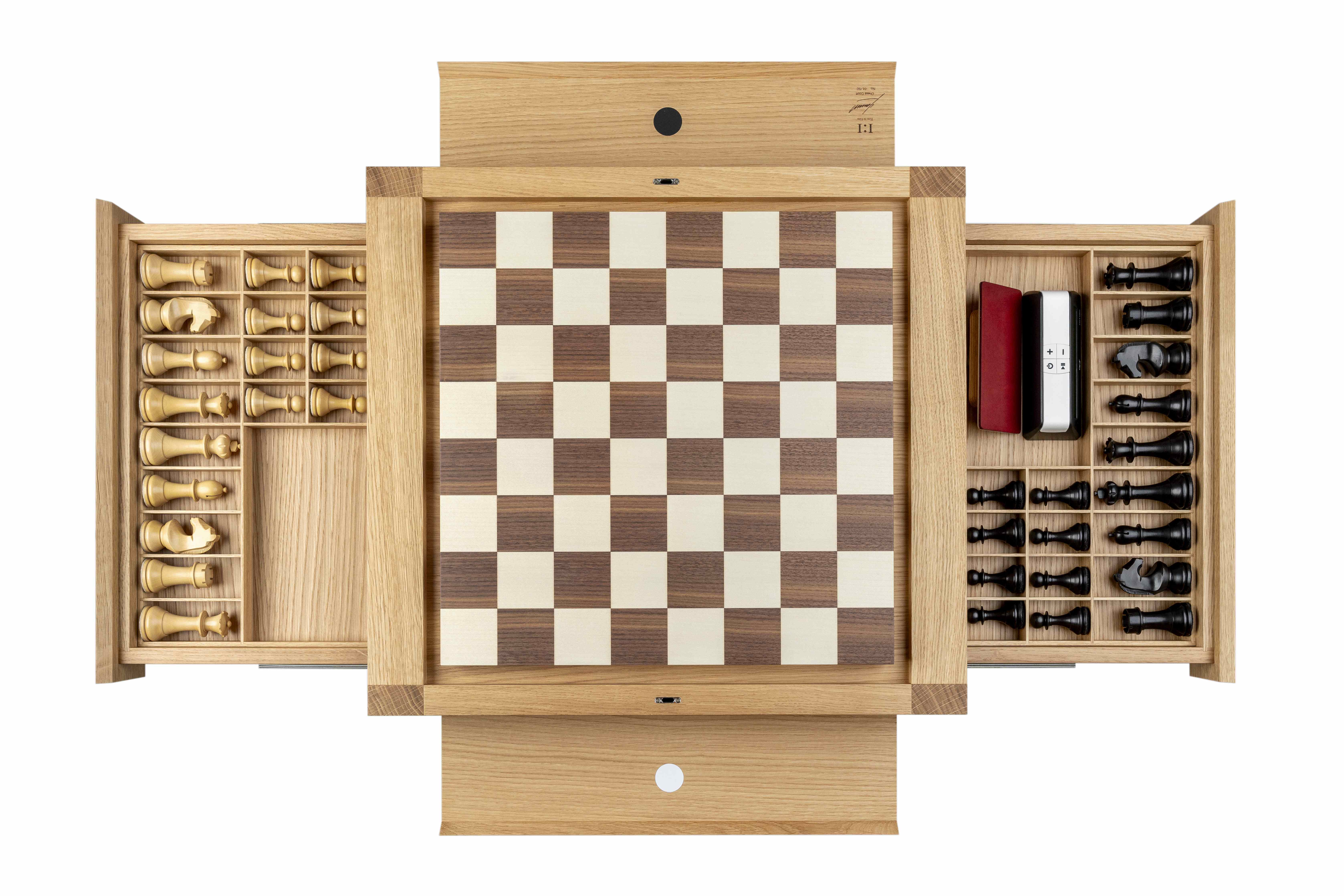
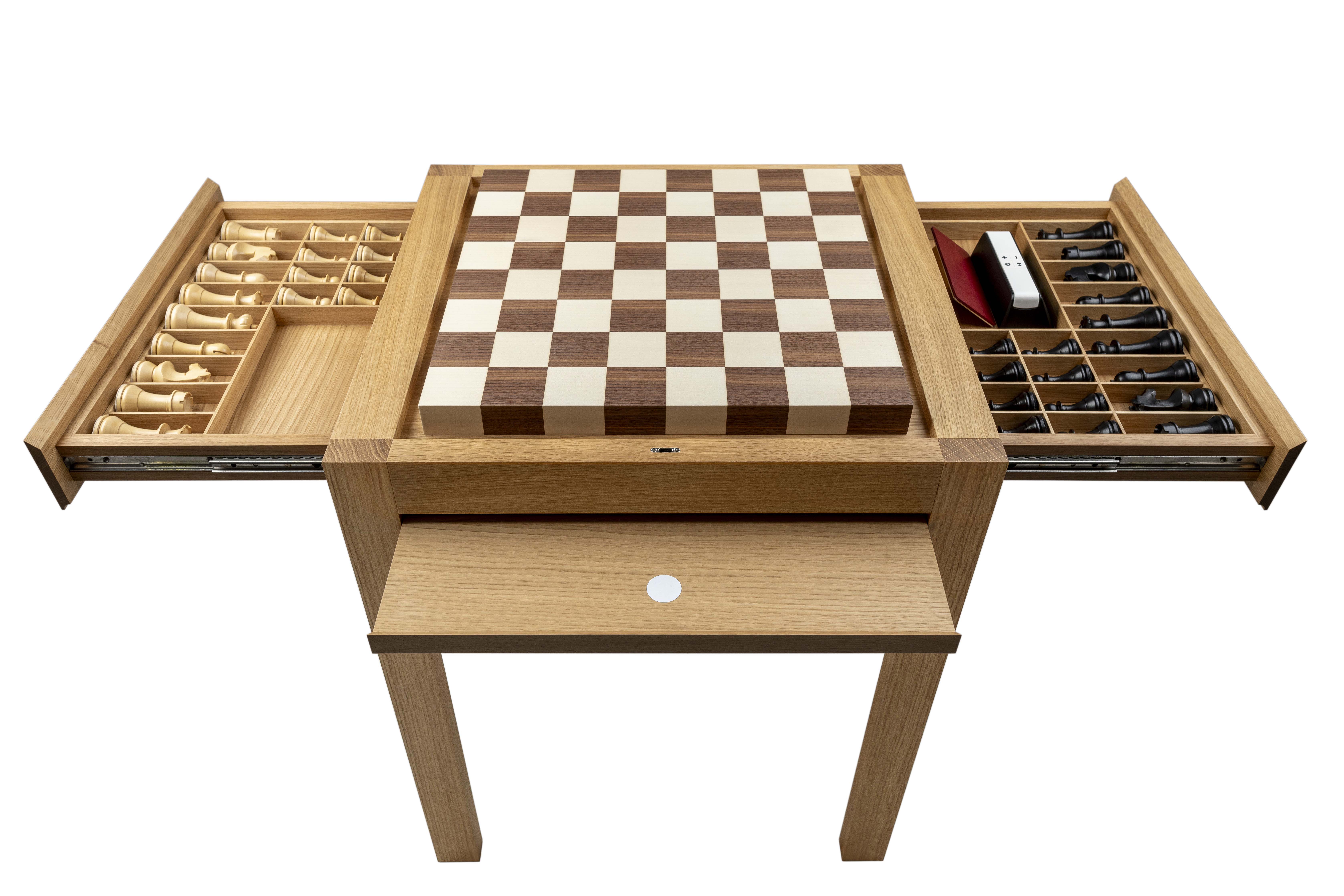
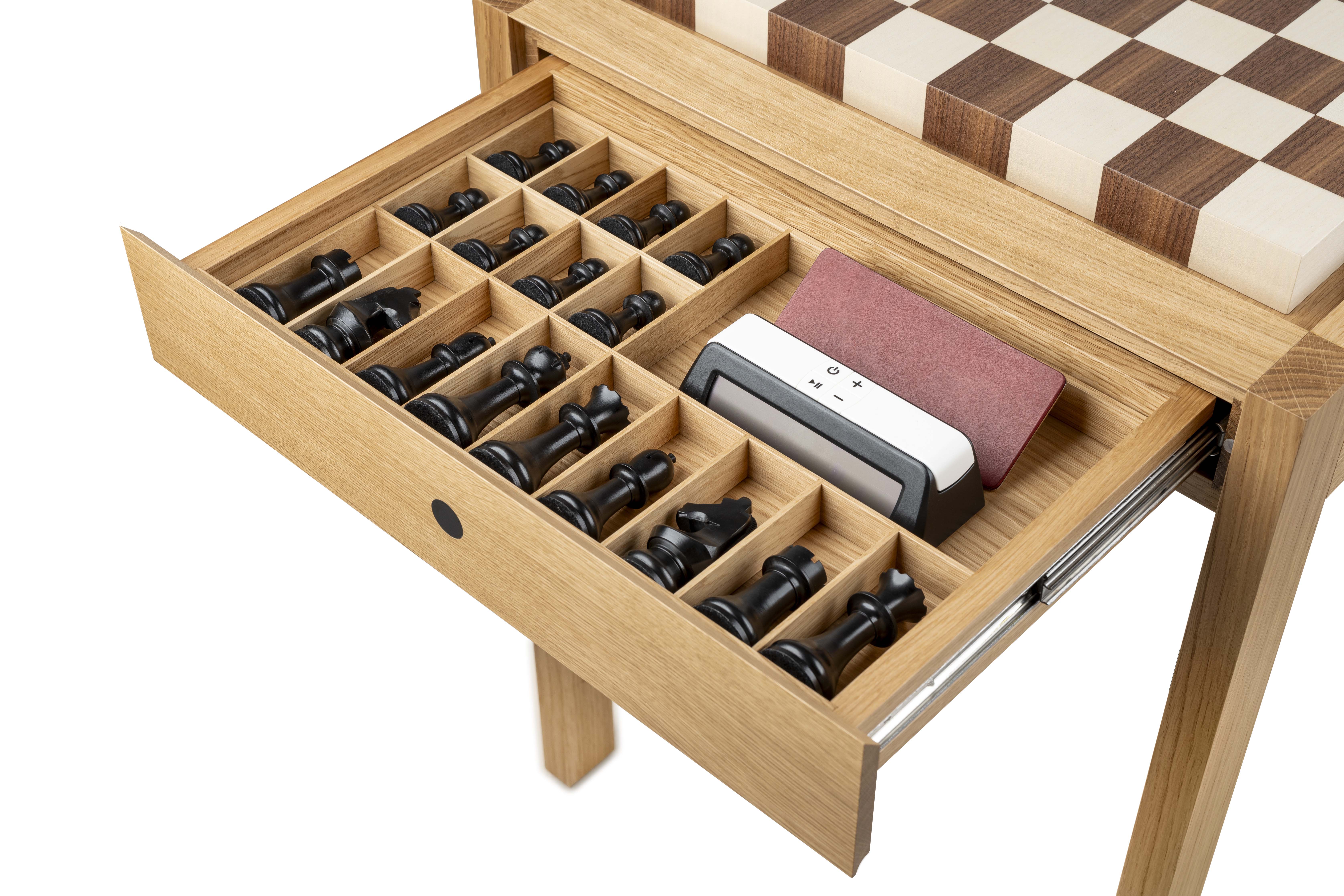
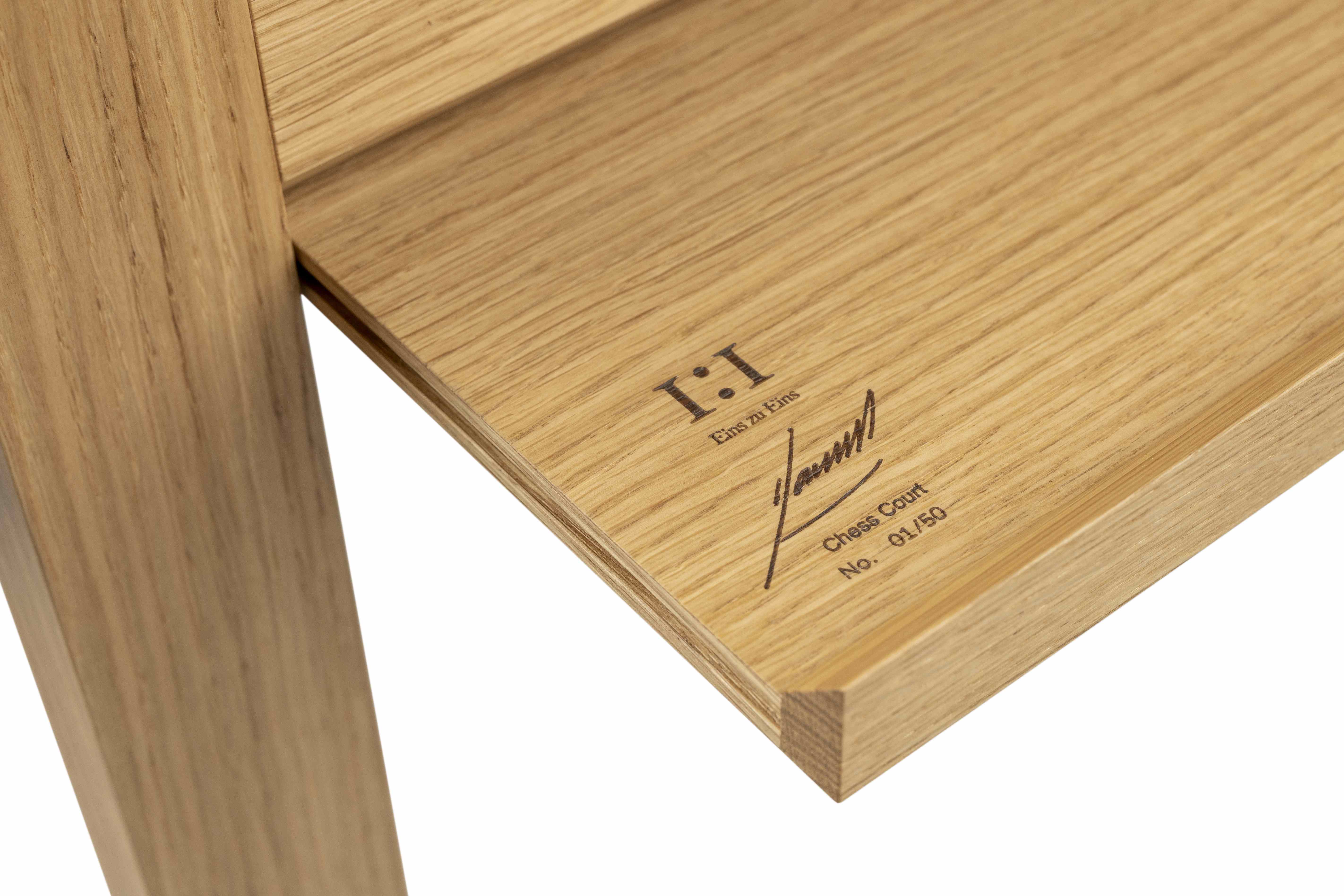
The game of chess has evolved over 1000 years with the king and queen as its Central figures, the court is their historic home. Since the first competitive chess Olympiad 1924 was organised in Paris its name was intended to be associated with the Olympics to give chess a sport status.
The
court is the meeting of these two modes, historic and modern.
“Chess is a sport and a game of thrones”
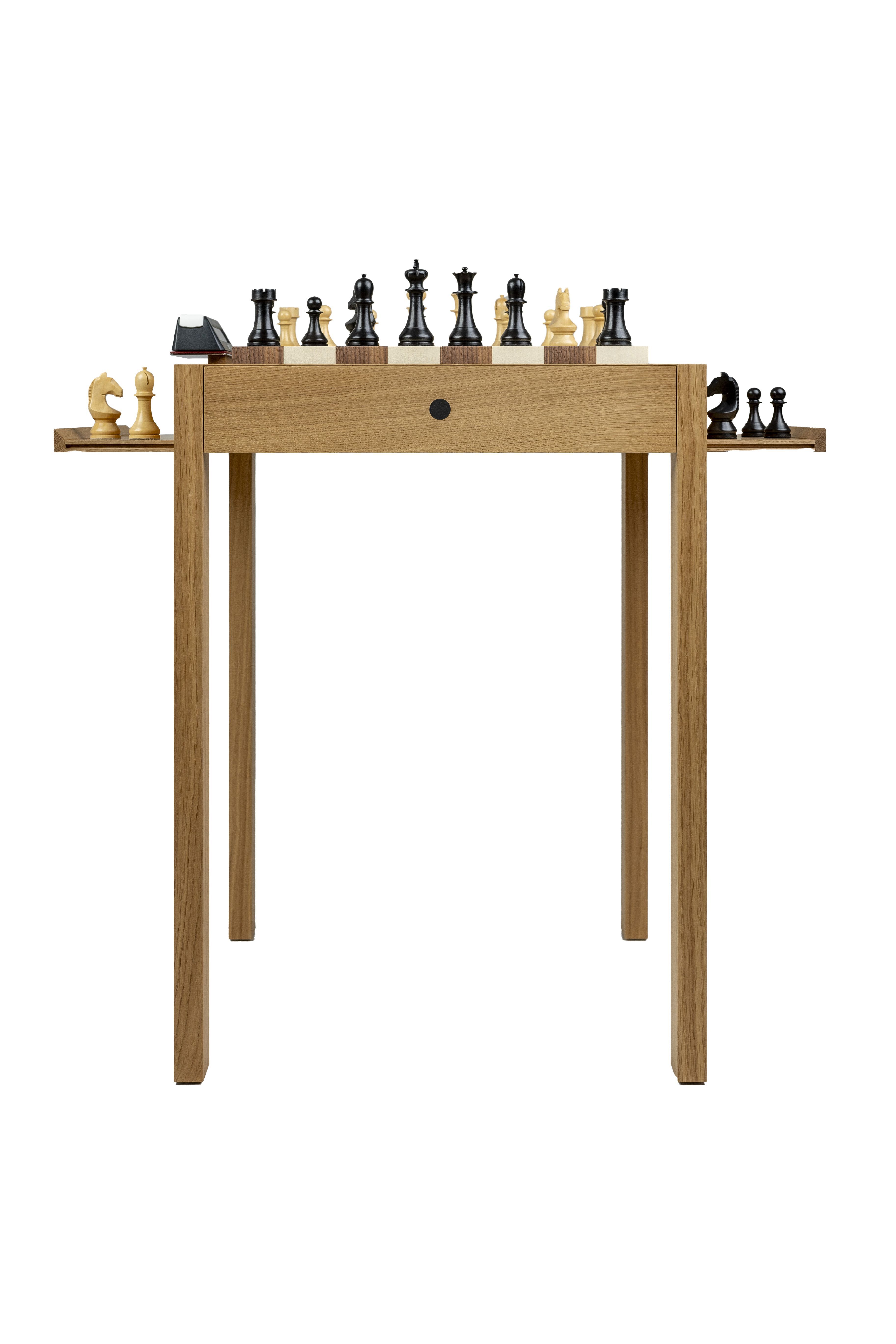


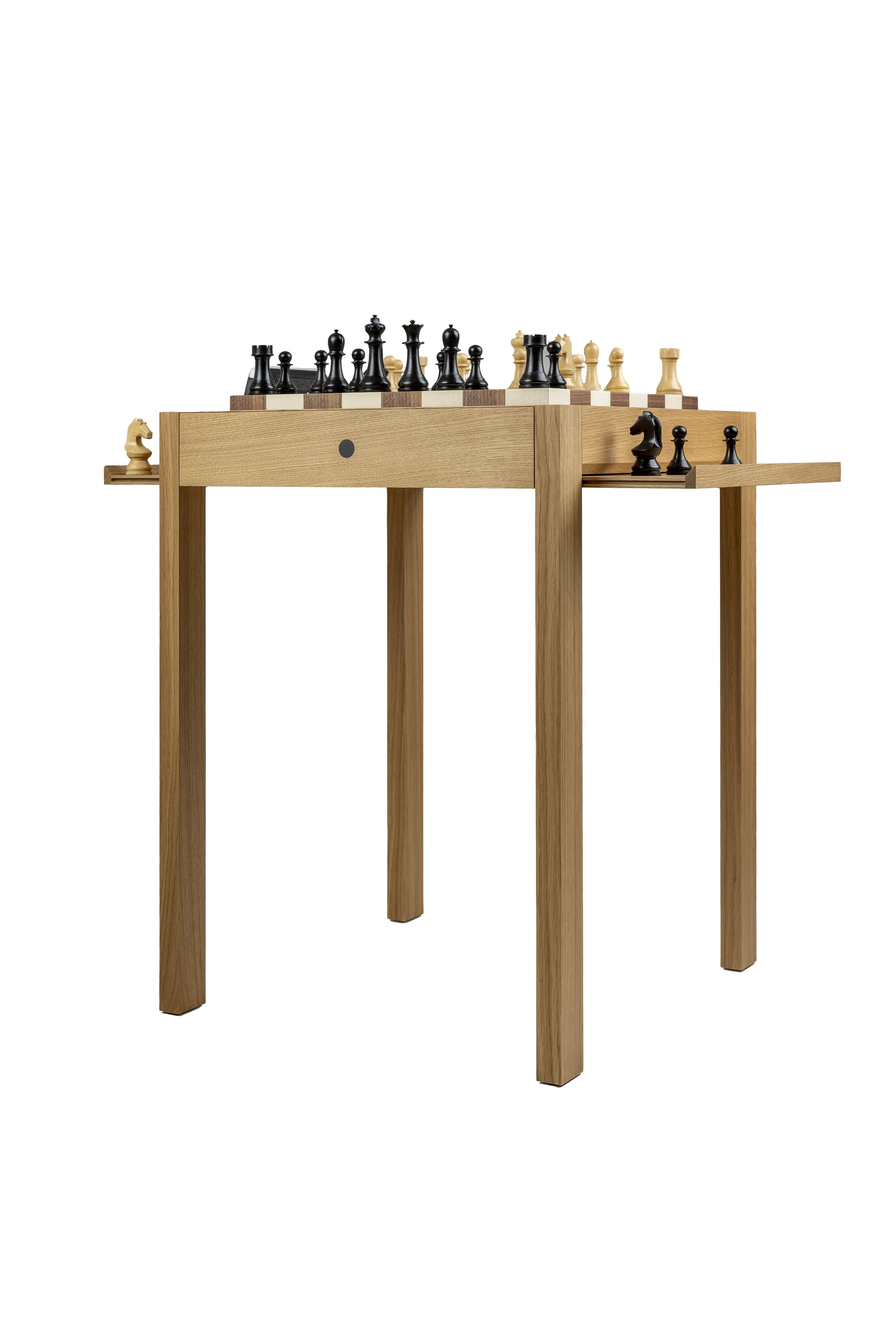

The 64 squares elevated slab of inlaid wood is surrounded by a trench, a mote, that separates the court volume from the table edge , making the elevated chequered landscape into a dramatic stage ,like an acropolis for the architecture of the 32 pieces set ready for the game.
The table is produced in a strictly limited edition of 50 pieces. Each table is numbered and accompanied by a certificate of authenticity signed by the designer. The table is made out of solid Oak.




Daniel Weil is an architect by training, a former Professor of Industrial Design at the Royal College of Art and a former Pentagram Partner. Over the past four decades he has created products, interiors, packaging and visual approaches for a broad range of clients that include: Swatch, Lego, Krug, Superga, Benetton, Aldo, United Airlines, One & Only Resorts, the Savoy Hotel and the Dorchester in London.

The designer Daniel Weil plays the first move of the 2018 World Chess Championship showdown between Magnus Carlsen and Fabiano Caruna.
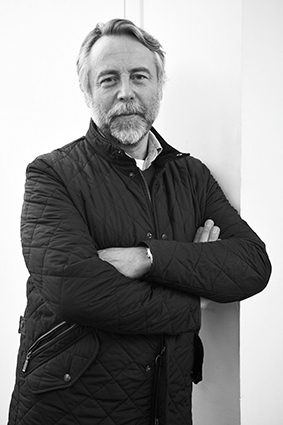
In 2013, Daniel designed and art directed the World Chess Candidates Tournament, won by former World Champion Magnus Carlsen. He subsequently designed the World Chess organisation’s – FIDE – official chess set.
Daniel has designed and manufactured products, including a collection for Memphis in Milan, the iconic Bag Radio and other pioneering design objects. Some of this work is in the permanent collections of the Museum of Modern Art in New York and the Victoria & Albert Museum in London, amongst others. In 2014, the Design Museum celebrated Daniel’s career to date with the exhibition Time Machines: Daniel Weil and the Art of Design.